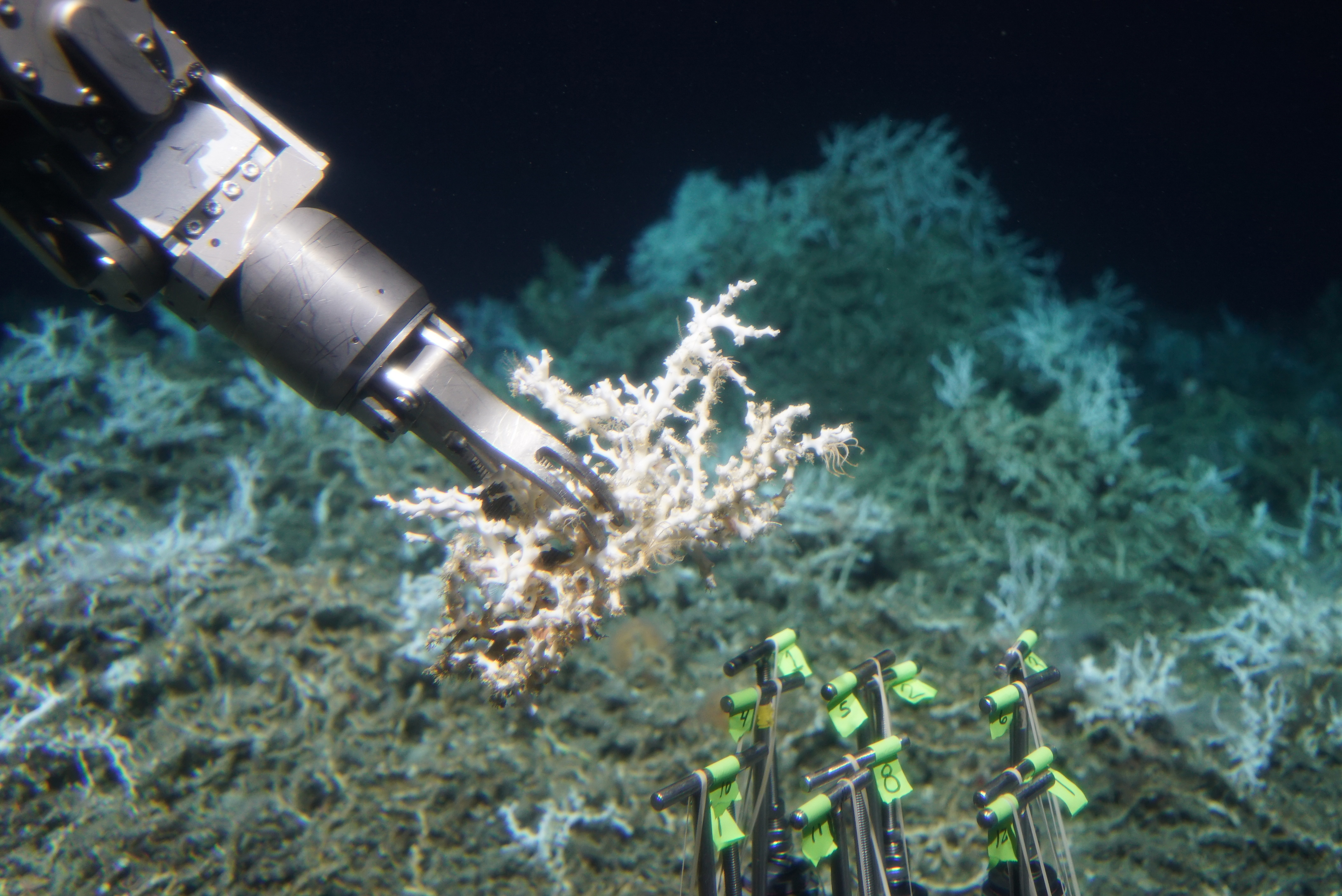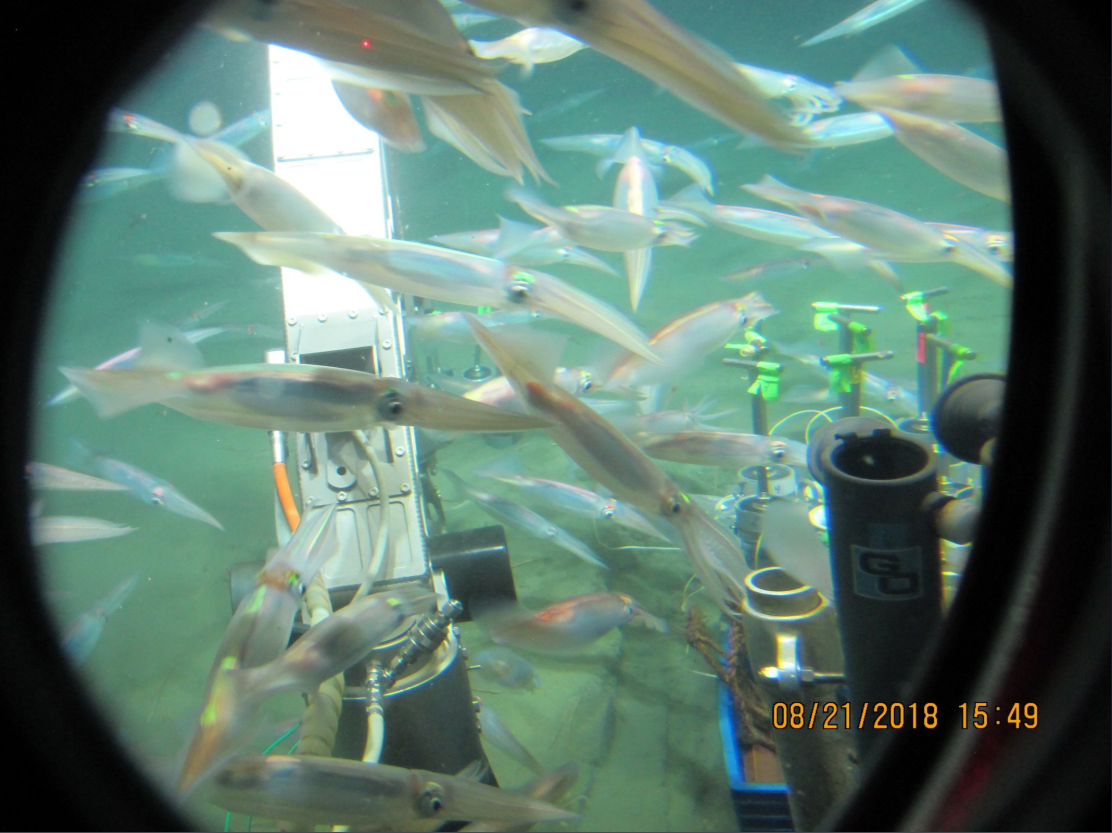A Secret Garden in the Atlantic
Published by Ocean Conservancy
Did you know we know more about the surface of the moon than the ocean’s seafloor? Well, score one for the deep sea this summer, where a team of scientists just made a very big discovery.
Last month a research vessel floating 160 miles off the coast of Charleston, South Carolina, squeezed three people into the Alvin (the same deep-sea submersible that was used to explore the Titanic wreck) and dove a half-mile down to the seafloor. There they found an estimated 85-mile-long coral reef, which no one even knew existed before this expedition. This discovery was possible thanks in part to NOAA Ship Okeanos Explorer, a “hypothesis-generating ship” that visited the site earlier this year to map the area and found hundreds of giant mounds on the seafloor—mounds, it turns out, made of ancient, dead corals with living corals growing on top.


This expedition is part of a 5-year project called DEEP SEARCH, and the team includes researchers Mandy Joye and Erik Cordes, who’ve also logged many hours on the Gulf of Mexico seafloor since the BP Deepwater Horizon oil disaster. The team just wrapped up a 2-week cruise off the coast of Virginia, North and South Carolina, and Georgia. Their goal: to “reveal the amazing diversity of habitats that are present in our own backyard.”
This area is one of many potentially sensitive deep-sea habitats that could be exposed to new oil and gas drilling under President Trump’s proposed plan to open nearly all of America’s offshore waters to offshore drilling. Dr. Cordes estimates the living corals discovered here could be hundreds of thousands of years old, and the entire colony may have grown here for millennia.
The expertise of the scientists on board ranges from corals to copepods, microbes to mud. Together, these scientists from all around the country (plus a filmmaker and a journalist on board to capture the excitement) are building a clearer picture of what’s at stake when we consider opening the Atlantic Coast to offshore drilling.
Following along with the mission for the last couple of weeks, it’s clear that the research team was having a lot of fun while also making great strides in deep sea science. For some members of the team, this was their first time visiting the seafloor in Alvin, and, as is tradition, they were doused with buckets of ice water afterwards to commemorate the experience.


Reflecting on one of the mission’s first dives to the deep, Dr. Joye wrote on Twitter, “The deep ocean is not a desert. It is environment teeming with life, one that is integrally connected to the rest of the ocean and to us.” The discoveries made by the DEEP SEARCH team are a testament to the wonder of the deep sea and how important it is for us to understand it in order to better protect it.


You can find out more about the DEEP SEARCH 2018 mission, watch videos and meet the team on their mission page. I also recommend looking up the #DEEPSEARCH hashtag on Twitter for more ice bath photos, stinky squid stories and pizza jokes.
Sign up for our emails!
The post A Secret Garden in the Atlantic appeared first on Ocean Conservancy.
Read the full article at: https://oceanconservancy.org/blog/2018/09/04/secret-garden-atlantic/



